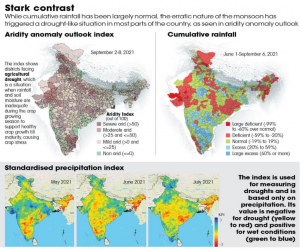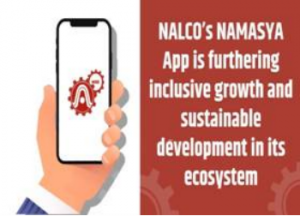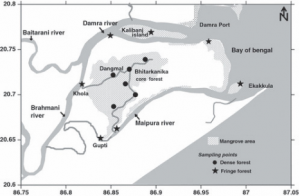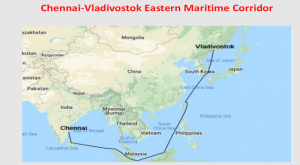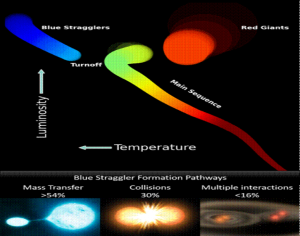THE CONTEXT: The fifth annual democracy report by Sweden’s V-Dem Institute, titled ‘Autocratisation goes viral’, has downgraded India from “the world’s largest democracy” to an “electoral autocracy”.V-Dem’s findings are consistent with other contemporary international inferences on the quality of democracy prevailing in India: Freedom House designated India to be “partly free” recently; India was described as a “flawed democracy” in the latest Democracy Index published by The Economist Intelligence Unit.
India: A Captured Democracy
The current crisis of Indian democracy should be seen as the outcome of a “democracy capture”. In democratic societies, the common good should prevail over individual interests. The state’s role is to design and implement public policies that enhance and improve the rights of its citizens. If the opposite is the case, the state is said to have been ‘captured’. A state that grants privileges to a few over the majority of the population is one in which public policies reduce or limit the rights of its citizens.
The current crisis is different from the Emergency
- Emergency was an exception to a norm; what we now have is a different norm.
- Emergency needed a formal legal declaration. Capturing democracy does not.
- The Emergency had a beginning and was, at least on paper, required to have an end. Democracy capture has a beginning, but not necessarily an end.
- Beyond Kashmir, there has been no mass arrest of politicians, and many more state governments are run by political parties that do not rule in Delhi.
This is ‘democracy capture’ as democracy is both the object and the subject of this capture. The apparatus being seized is democracy. And the means being deployed for this capture are also democratic. The formal procedures of democracy have been used to subvert the substance of democracy. This democracy capture could not have happened without some structural weaknesses within the Indian democracy. Therefore, one must focus on the conditions that made this kind of capture possible.
Government to blame
The rankings blame the government for the backsliding of democracy. They say there has been increased pressure on human rights groups, intimidation of journalists and activists, and a spate of attacks, especially against Muslims under the present regime. This has led to a deterioration of political and civil liberties in the country.
- V-Dem said the “diminishing of freedom of expression, the media, and civil society have gone the furthest” and that far as censorship goes India was “as autocratic as Pakistan and worse than its neighbours Bangladesh and Nepal”.
- Freedom House said civil liberties have been in decline since 2014, and that India’s “fall from the upper ranks of free nations” could have a more damaging effect on the world’s democratic standards.
- And The Democracy Index said the “democratic backsliding” by authorities and “crackdowns” on civil liberties had led to a decline in India’s rankings. It said government policies had “fomented anti-Muslim feeling and religious strife and damaged the political fabric of the country”.
The world moves towards autocratisation
Going by rankings, democracy, despite its enduring appeal, appears to be in trouble all over the world. The erosion of freedoms in India seems to be consistent with the retreat of liberal democracies around the world. According to V-Dem, electoral autocracies are now present in 87 states that are home to 68% of the global population.
- In the 2020 Democracy Index, only 75 of the 167 countries and territories covered by the model – or 44.9% – are considered to be democracies.
- Freedom House estimates less than 20% of the world’s population now lives in a free country, the smallest proportion since 1995.
- According to V-Dem Liberal democracies are diminishing, and are home to only 14% of the people.
- During 2020, two-thirds of countries imposed restrictions on the media and a third of countries have emergency measures without an expiry date.
- But the breakdown of democracy in established cases is concerning. India is the latest example of this following Hungary and Turkey. The Indian case stands out given the size of its population and past record as a successful model of multi-ethnic democracy
India’s Autocratisation Process
- Autocratisation typically follows a similar pattern across very different contexts. It begins with ruling governments attacking the media and civil society, followed by polarisation of the society by disrespecting opponents and spreading false information and culminates in elections and other formal institutions being undermined.
- Leaders in some constitutional democracies have used use constitutionalism and democracy to destroy both. Electoral mandates plus constitutional and legal changes are used for this. They support elections and use their electoral victories to legitimise their legal reforms. They use constitutional change for achieving the unified domination of all of the institutions of state.
- India follows the pattern observed in other cases of recent democratic breakdown, the typical pattern for countries in the ‘Third Wave’. India is among the countries leading the ‘third wave of autocratisation’.
Third wave
- Unlike previous waves, the present wave mainly affects democracies.
- Traditional methods of dramatic and blatant military coups (1stwave) and election fraud (2nd wave) have been replaced with legal, informal and discrete power transfers (3rd wave).
Like for authoritarianism
- Surveys have reported that Indians have demonstrated both majoritarian and authoritarian impulses for some years now and younger people do not have particularly more progressive beliefs.
- In the latest round (2010-2014) of the World Values Survey, India along with Pakistan and Russia, featured below the global average on the importance accorded to democracy.
- The latest Pew Global Attitudes Survey, conducted in early 2018, found that a majority of Indians were satisfied with the way democracy was working
Evidences from the reports
India is now ‘Partly Free’ in Freedom House’s report
- Freedom in the World report has downgraded India’s status from a ‘Free’ country to a ‘Partly Free’ country. The report noted a “multiyear pattern” as it attributed the downgrade — from a score of 71 in 2019 and 75 in 2018 to 67 in 2020.
- It said criminal charges were filed against journalists, students, and others under “colonial-era sedition laws” and the the Information Technology (IT) Act in response to “speech perceived as critical of the government, notably including expressions of opposition to the new citizenship legislation and discussion of the official response to the COVID-19 pandemic”.
Discrimination’ against Muslims
- A number of Hindu nationalist organizations and some media outlets promote anti-Muslim views, which the government has been accused of encouraging.
- The implementation of the CAA and the government’s intention for a NRC threatened to disenfranchise Muslim voters.
- The report also mentioned cow vigilantism.
Lack of freedom’ in institutions
- Freedoms of various institutions such as the Election Commission of India and the Supreme Court have been called into question.
- The amendment of the Right to Information Actpotentially exposed the commissioners to political pressure.
Freedom of media and expression
- The report said the authorities have used security, defamation, sedition, and hate speech laws, as well as contempt of court charges, to quiet critical voices in the media which has exacerbated self-censorship.
- It also claimed that academic freedom has declined and that academics, professors and students are intimidated.
How reliable are these rankings?
Global exercises.
- Freedom House’s latest global report on political rights and civil liberties covers developments in 195 countries and 15 territories.
- V-Dem claims to produce the largest global dataset on democracy involving 202 countries from 1789 to 2020.
- The Economist Intelligence Unit’s Democracy Index gives a snapshot on the health of democracy in 165 countries and two territories.
Rules and parameters
- V-Dem says it measures “hundreds of different attributes of democracy” with almost 30 million data points, involving more than 3,500 scholars and country experts.
- The Economist’s Democracy Index is based on measuring electoral process and pluralism, the functioning of government, political participation, political culture and civil liberties”.
- And Freedom House says it uses a two-tiered system consisting of scores and status – a country is awarded points for each of its political rights and civil liberties indicators.
Subjectivity
- Such rankings, according to a study by University of Pennsylvania, are the result of quantitative assessments – like distribution of seats in the national legislature among political parties – and qualitative judgements, like evaluating whether safeguards against corruption are effective.
- Aggregating these indicators into an index is a subjective exercise, depending on the judgements of experts to identify metrics to include and how to weight each appropriately.
- Most rankings do not impose a single definition of democracy – experts agree that an “electoral democracy” is really the bare minimum
India is now an ‘Electoral Autocracy’ in V-Dem’s report
India registered a 23-percentage point drop on its 0-to-1 Liberal Democracy Index (LDI) scale, which aims to capture electoral and liberal aspects of democracy.
With this slide, India has moved from the top 50% of the 180 countries analysed by V Dem to the bottom 50%. In last year’s report, India was last among the 90 countries in the top 50%. This year, it is ranked 97th, falling into the bottom 50%.
Elections
- The autonomy of the ECI saw a severe depreciation since around 2013 and signals the decline in the quality of critical formal institutions.
- The overall freedom and fairness of elections also was hard hit, with the 2019 elections, hastening a downgrading to an electoral autocracy.
Freedom of expression
- By 2020, censorship efforts are becoming routine and no longer even restricted to sensitive (to the government) issues. India is, in this aspect, now as autocratic as is Pakistan, and worse than both its neighbors Bangladesh and Nepal.
- In general, the government has used laws on sedition, defamation, and counterterrorism to silence critics. For example, over 7,000 people have been charged with sedition after 2014 and most of the accused are critics of the ruling party.
- The law on defamationhas been used frequently to silence journalists and news outlets that take exception to policies of the government.
Civil Society
- Constraints have been also placed on civil society. The UAPA, 1967, amended in August 2019, is being used to harass and imprison political opponents, as well as people mobilizing to protest government policies and to silence dissent in academia.
- The government have increasingly used the FCRA to restrict the entry, exit and functioning of Civil Society Organisations.
India’s slide in other indices which monitor democratic freedoms
- India’s slide in these reports only mirrors its decline in indices compiled by independent bodies which monitor democratic freedoms over the past few years.
- In March 2020, Reports Without Borders (RSF)placed India alongside China, Russia, Iran and Saudi Arabia in a list of press freedom’s “worst digital predators”. The list flags countries where companies and government agencies use “digital technology to spy on and harass journalists”.
- In April 2020, the US government’s Religious Freedom Monitorrecommended that the country’s state department should include India in the list of “countries of special concern”. It noted that religious freedom had improved globally but singled out India for seeing a “sharp downward turn”.
- Again in April, India was ranked 142nd out of 180 countries in RSF’s Press Freedom Index, sliding two ranks down. It criticised the ‘longest electronic curfew’ in history in Kashmir and highlighted that ‘state troll armies’ in the country use the ‘weapon of disinformation’ on social media.
- The country also fell 26 places to rank 105th among 162countries and territories on a global economic freedom index released by the Fraser Institute in Canada in September 2020.
- Finally in December 2020, India was ranked 111th out of 162countries in the Cato Institute’s Human Freedom Index 2020. Between the 2019 and 2020 indices, the country plummeted 17 spots.
- With the Centre giving the nod to the new IT Rules, which give the government sweeping powers, future reports could see India’s media freedom being downgraded further.
India is a “Flawed Democracy” in EIU’s ‘Democracy in sickness and in health report
India has fallen two places to 53rd in the 2020 Democracy Index report released by The Economist Intelligence Unit (EIU). The country was ranked 51st in 2019, with an overall score of 6.9 which has dropped down to 6.61. While India’s democratic credibility and scores suffered this year, regional neighbours, namely, Bangladesh, Bhutan and Pakistan saw marginal improvement.
Religious strife
- It cites the CAA, as the primary cause that fuelled protests in the country for months.
- The ground-breaking ceremony for the construction of Ram temple in Ayodhya, is the second significant event that the report cites to explain the fall in India’s position as a vibrant democracy
Lockdown
- The government’s handling of the COVID-19 pandemic and a crackdown on voices that criticised its measures.
- According to media reports, 55 Indian journalists were threatened, arrested and booked by the Centre and state governments for their reporting on COVID-19.
How has India’s government reacted?
The flurry of downgrades has cast a shadow on the global image of India’s democracy. The government has said that the ‘Freedom in the World’ report is “misleading, incorrect and misplaced”. The government also issued a point-by-point-rebuttal.In parliament, the chairman of the upper house, Venkaiah Naidu, did not allow an opposition MP to pose a question related to the V-Dem report
What could be probable impact on India?
A) Foreign Policy
The biggest impact of these developments is, of course, internal. But the impact is also external. India has been accorded great respect in the world but the perceptions are now changing. Other countries’ view of India is influenced by calculations and hopes that it can help counter Chinese expansionism in Asia.
India exercises lesser economic power internationally than China. Democracy was unquestionably one of India’s biggest international assets. The United States and its allies have courted India as a potential strategic partner and democratic counterweight to China in the Indo-Pacific region. However, the Indian government’s departures from democratic norms could blur the values-based distinction between Beijing and New Delhi
B) Entrepreneurship
In India, due to the diversities of economic life, the evidence shows that economic growth is best achieved in times of civic and social freedom. In India’s economic growth oriented phases where governments delivered steady growth rates, state had a lighter footprint on civic life.
The attempt to spur free private enterprise is bound to fail when the state apparatus is constricting civil and democratic rights. The common entrepreneur is a free thinker. But when the freedom to think is constricted, the robust energies of new entrepreneurs are in danger of being snuffed out.
What is the criticisms of these reports?
- But just as democracy is not about poll statistics, our democratic credentials can’t be crunched into a score either. The parameters in play are unquantifiable. The method used to condense complexities of this vast country into a score that allows a rank ordering could be debated. Globally, ratings are being called into question. One prominent researcher concludes that the ratings may look scientific but they’re actually subjective.
- General observation does confirm that India has not escaped global trends. Power appears more centralized than before and complaints have been aired of dissent losing space. What these ratings seem not to have taken into account are the popular voices of support for the constitutional values and democratic principles of equality, liberty and justice.
- As Nobel laureate Amartya Sen has argued, Indians are an inherently argumentative, and our traditions of debate and discursive problem-solving go back millennia. The country’s response to the suspension of civil liberties during the Emergency testifies to that. It is hard to argue that Indians at large are not better informed and keener on empowerment now than they were then. Democracy is far more than the periodic ritual of exercising our franchise, yes, but it cannot be reduced to an index reading either.
- Other organs of the state, Parliament and the Courts have enacted and reinforced progressive social legislation. Gay sex decriminalized, right to privacy fire-walled and women have been granted equal rights to pray in thus far male only places of worship. Even when state governments have enacted legislation impinging upon the private lives of two consenting adults the courts have been quick to restrain police who filed cases under the laws.
- A large number of nations where there is no separation of powers between the state and religion, which do not have a republican form of government, and where the concept of equality before law does not exist, are way ahead of us. In fact, many countries in the top ten nations have different forms of Christianity as their state religion, whereas the secular ideal is embedded in the preamble of our Constitution.
- These rankings are useful for research and identifying very broad trends that academics are interested in.This is an instance of academic discourse and concepts operating at a considerable distance from lived experience. The operational concepts across the two domains are very different.
- Indeed, the methodology and ranking mechanisms adopted by organisations like Freedom House and projects like V-Dem can be critiqued. But Within their limitations, such assessments fulfil two purposes. They allow cross-national comparisons. One may have reservations about their criteria but being common for all countries, they give a reasonable idea where a country stands vis-à-vis others. They also tell us how a given country has been performing over time.
- The ministry of external affairs is considering a “world democracy report” as well as a “global press freedom index” to be brought out by an independent Indian think tank.
- The discussions were going on before recent reports by Freedom House and V-Dem Institute downgraded India’s democratic rankings.
- The ministry of external affairs began discussions that India should counter reports such as the report from the Sweden-based V-Dem Institute and the Press Freedom Index by defining its own parameters on democracy.
- In its internal note, MEA also suggested that missions across the world could actively engage with NGO/institutes such as the RSF and V-Dem and provide them with material which will help them put “India at the rightful place on the democracy and press-freedom index, in future reports”. The matter is still being considered and no decision has been taken.
WAY FORWARD:
- The signs of authoritarianism cannot be denied. Since the end of the Cold War, most democratic breakdowns have been caused not by coups but by elected governments themselves. More prevalent now is what scholars are calling “democratic backsliding”, a new concept to depict democratic erosion led by elected politicians, often quite legally. Many government efforts to subvert democracy are legal in the sense that they are approved by the legislatures or accepted by the courts. There are examples from Latin America and Europe, and the US under Donald Trump. India’s democracy is backsliding, because elected politicians are subverting democracy.
- Democratic backsliding in India is especially concerning because India’s democracy was exceptional as democracy was not only established at low levels of income, but it even flourished. Other certificates from foreign monitors or watchdogs are welcomed and celebrated. This is true of the QS World University Rankings 2021, and World Bank’s annual report on ease of doing business 2020. These are applauded — as they should be. Yet, the bedrock beneath top-notch campuses and a vibrant market are the nation’s democratic credentials and the work of maintaining them is the most stellar achievement of all. They are what separate India from its neighbours in the region, and what distinguish it from China. The combination of an open market and an open democracy is what attracts private players and investors factor into their economic calculations. There must be no erosion or backsliding here — and in an increasingly interconnected world, perceptions of erosion and backsliding need to be addressed, not dismissed.
- If democracy was just about free and fair elections, India would be the world’s greatest democracy. The apparatus needed for a healthy democracy goes beyond elections to unelected institutions: the judiciary, the press, the Reserve Bank of India, the Election Commission of India, the Comptroller and Auditor General (CAG), the Lokpal, the Central Bureau of Investigation (CBI), the tax agencies, the police, and so on.
- The more powerful a government, the more it pushes its way ahead of independent institutions. India will always have this problem of an executive seeking to ride roughshod over independent institutions through whatever means possible. Institutions that serve as the bulwark of democracy must regain their spirit and purpose for India to arrest its slide.
- An awakening looks unlikely unless citizens themselves take up the cause of democracy. We had to pressure the government to have an independent system of appointing the Election Commissioners. Nobody wants to relinquish their powers. It is we the people who have to force the political class to have this conversation. Most of the Indian media has become a mouthpiece of the government. We need an equivalent of the First Amendment in the United States to ensure press freedom. It is civil society that will have to help create a consensus that we need to do something to ensure greater media independence.
CONCLUSION:
Democracy means that the rulers represent the will of the people. It will never happen on its own. People must act to make it happen. And they need to do it as a matter of habit, daily and everywhere. That lever of control over the government – seeking accountability – must be used at every step. Reclaim democracy. It must be done daily. Seeking it once every five years will not do.
Sources
https://www.thehindu.com/opinion/op-ed/a-democracy-capture/article32329108.ece
https://theprint.in/opinion/no-emergency-modi-shah-are-using-democracy-to-subvert-democracy/447685/
https://thewire.in/rights/india-no-longer-democracy-electoral-autocracy-v-dem-institute-report-bjp-narendra-modi
https://www.hindustantimes.com/india-news/india-rated-as-an-electoral-autocracy-by-global-institute-101615412313577.html
https://www.thequint.com/videos/news-videos/india-only-partly-free-it-is-not-just-an-internal-matter
https://www.bbc.com/news/world-asia-india-56249596
https://oi-files-d8-prod.s3.eu-west-2.amazonaws.com/s3fs-public/file_attachments/captured_democracy_executive_summary.pdf
https://theprint.in/opinion/authoritarian-streak-among-indians-on-the-rise-and-its-helping-bjps-hard-right-turn/335467/
https://indianexpress.com/article/opinion/columns/two-homegrown-questions-for-indian-democrats-7231466/
https://indianexpress.com/article/opinion/columns/elected-government-death-of-democracy-india-7200030/
https://www.bbc.com/news/world-asia-india-56393944
https://www.hindustantimes.com/india-news/india-mulls-new-democracy-report-freedom-index-by-local-think-tank-101615938955923.html
https://indianexpress.com/article/opinion/columns/india-china-emergency-democracy-7196194/
https://www.livemint.com/opinion/online-views/democracy-is-not-just-about-numbers-11579713634454.html
https://www.theleaflet.in/flawed-democracy-india-falls-to-53rd-position-in-economist-intelligence-units-global-democracy-index/#
https://timesofindia.indiatimes.com/blogs/bloody-mary/freedom-from-fear-for-the-economy-to-grow-democracy-cant-be-in-recession/

